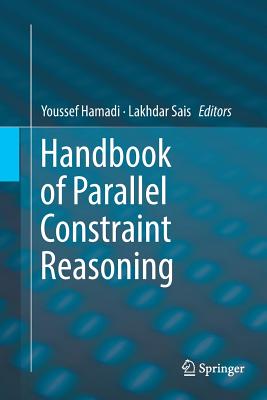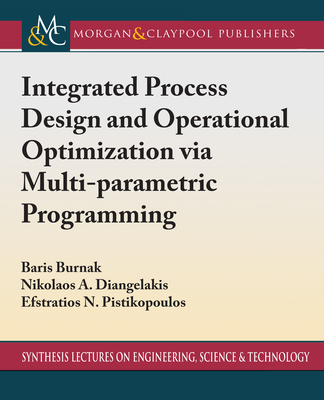Optimization and Mathematical Modeling in Computer Architecture (Paperback)
暫譯: 計算機架構中的優化與數學建模 (平裝本)
Tony Nowatzki, Michael Ferris, Karthikeyan Sankaralingam, Cristian Estan, Nilay Vaish, David Wood
- 出版商: Morgan & Claypool
- 出版日期: 2013-09-01
- 售價: $1,530
- 貴賓價: 9.5 折 $1,454
- 語言: 英文
- 頁數: 158
- 裝訂: Paperback
- ISBN: 1627052097
- ISBN-13: 9781627052092
-
相關分類:
Computer-architecture
海外代購書籍(需單獨結帳)
買這商品的人也買了...
-
 鳥哥的 Linux 私房菜-基礎學習篇, 3/e
鳥哥的 Linux 私房菜-基礎學習篇, 3/e$820$648 -
 PHP 6 & MySQL 6 網頁資料庫程式設計演繹
PHP 6 & MySQL 6 網頁資料庫程式設計演繹$600$474 -
 大話資料結構
大話資料結構$590$466 -
 學徒模式-優秀軟體開發者的養成之路 (Apprenticeship Patterns: Guidance for the Aspiring Software Craftsman)
學徒模式-優秀軟體開發者的養成之路 (Apprenticeship Patterns: Guidance for the Aspiring Software Craftsman)$420$332 -
 單晶片 ARM Cortex-M0 控制實習
單晶片 ARM Cortex-M0 控制實習$480$408 -
 Android 4.X 手機/平板電腦程式設計入門、應用到精通, 2/e (適用 Android 1.X~4.X)
Android 4.X 手機/平板電腦程式設計入門、應用到精通, 2/e (適用 Android 1.X~4.X)$520$411 -
 JavaScript Pocket Reference, 3/e (Paperback)
JavaScript Pocket Reference, 3/e (Paperback)$784$743 -
 Raspberry Pi XBMC(XBox Media Center) 套件組合
Raspberry Pi XBMC(XBox Media Center) 套件組合$2,400$2,280 -
 Unity 3D 遊戲設計實戰-從入門、應用到熱門遊戲實作開發 (官方推薦用書,附試用版、單機與網頁版範例)
Unity 3D 遊戲設計實戰-從入門、應用到熱門遊戲實作開發 (官方推薦用書,附試用版、單機與網頁版範例)$580$458 -
 Android App 程式設計教本之無痛起步
Android App 程式設計教本之無痛起步$480$379 -
 易讀程式之美學-提升程式碼可讀性的簡單法則 (The Art of Readable Code)
易讀程式之美學-提升程式碼可讀性的簡單法則 (The Art of Readable Code)$480$379 -
 使用 WordPress 架站的 20 堂課:規劃 x 佈景 x 建置 (Web Designer's Guide to WordPress: Plan, Theme, Build, Launch)
使用 WordPress 架站的 20 堂課:規劃 x 佈景 x 建置 (Web Designer's Guide to WordPress: Plan, Theme, Build, Launch)$420$332 -
 Arduino Nano 3.0 with ATMEGA328
Arduino Nano 3.0 with ATMEGA328$350$333 -
 無瑕的程式碼-敏捷軟體開發技巧守則 + 番外篇-專業程式設計師的生存之道 (雙書合購)
無瑕的程式碼-敏捷軟體開發技巧守則 + 番外篇-專業程式設計師的生存之道 (雙書合購)$940$700 -
 Interconnecting Cisco Network Devices, Part 2 (ICND2) Foundation Learning Guide, 4/e (Hardcover)
Interconnecting Cisco Network Devices, Part 2 (ICND2) Foundation Learning Guide, 4/e (Hardcover)$1,980$1,881 -
 設計模式的解析與活用 (Design Patterns Explained: A New Perspective on Object-Oriented Design, 2/e)
設計模式的解析與活用 (Design Patterns Explained: A New Perspective on Object-Oriented Design, 2/e)$480$374 -
 Lightroom 5 魅力人像修圖
Lightroom 5 魅力人像修圖$450$356 -
 Linux Shell 程式設計與管理實務(完整涵蓋 Bash 4.x)
Linux Shell 程式設計與管理實務(完整涵蓋 Bash 4.x)$650$514 -
 讓我們 LINE 在一起! 最新版!-視訊對話‧線上 LINE Store‧極短片‧免費代幣
讓我們 LINE 在一起! 最新版!-視訊對話‧線上 LINE Store‧極短片‧免費代幣$249$197 -
 Google 軟體測試之道-進行 Google 級的軟體測試 (How Google Tests Software)
Google 軟體測試之道-進行 Google 級的軟體測試 (How Google Tests Software)$520$411 -
 DOM 深入精要 (DOM Enlightenment)
DOM 深入精要 (DOM Enlightenment)$480$379 -
 精通 Python|運用簡單的套件進行現代運算 (Introducing Python: Modern Computing in Simple Packages)
精通 Python|運用簡單的套件進行現代運算 (Introducing Python: Modern Computing in Simple Packages)$780$616 -
 7天學會 Git 版本控制 (Git Essentials)
7天學會 Git 版本控制 (Git Essentials)$280$218 -
 軟體專案開發實務|別只當編程猴 (Programming Beyond Practices: Be More Than Just a Code Monkey)
軟體專案開發實務|別只當編程猴 (Programming Beyond Practices: Be More Than Just a Code Monkey)$400$316 -
 Soft Skills 軟實力|軟體開發人員的生存手冊 (Soft Skills: The software developer's life manual)
Soft Skills 軟實力|軟體開發人員的生存手冊 (Soft Skills: The software developer's life manual)$520$411
相關主題
商品描述
In the last few decades computer systems and the underlying hardware have steadily become larger and more complex. The need to increase their efficiency through architectural innovation has not abated, but quantitatively evaluating the effect of various choices has become more difficult. Performance and resource consumption are determined by complex interactions between many modules, each with many possible alternative implementations. We need powerful computer programs to explore large design spaces, but the traditional approach of developing simulators, building prototypes, or writing heuristic-based algorithms in traditional programming languages is often tedious and slow. Fortunately mathematical optimization has made great advances in theory, and many fast commercial and academic solvers are now available. In this book we motivate and describe the use of mathematical modeling, specifically optimization based on mixed integer linear programming (MILP) as a way to design and evaluate computer systems. The major advantage is that the architect or system software writer only needs to describe what the problem is, not how to find a good solution. This greatly speeds up their work and, as our case studies show, it can often lead to better solutions than the traditional approach.
In this book we give an overview of modeling techniques used to describe computer systems to mathematical optimization tools. We give a brief introduction to various classes of mathematical optimization frameworks with special focus on mixed integer linear programming which provides a good balance between solver time and expressiveness. We present four detailed case studies -- instruction set customization, data center resource management, spatial architecture scheduling, and resource allocation in tiled architectures -- showing how MILP can be used and quantifying by how much it outperforms traditional design exploration techniques. This book should help a skilled systems designer to learn techniques for using MILP in their problems, and the skilled optimization expert to understand the types of computer systems problems that MILP can be applied to.
Fully operational source code for the examples used in this book is provided through the NEOS System at www.neos-guide.org/content/computer-architecture
Table of Contents: Acknowledgments / Introduction / An Overview of Optimization / Case Study: Instruction Set Customization / Case Study: Data Center Resource Management / Case Study: Spatial Architecture Scheduling / Case Study: Resource Allocation in Tiled Architectures / Conclusions / Bibliography / Authors' Biographies
商品描述(中文翻譯)
在過去幾十年中,計算機系統及其底層硬體不斷變得更大且更複雜。透過架構創新來提高其效率的需求並未減少,但定量評估各種選擇的影響變得更加困難。性能和資源消耗是由許多模組之間的複雜互動決定的,每個模組都有許多可能的替代實現。我們需要強大的計算機程序來探索大型設計空間,但傳統的開發模擬器、構建原型或在傳統編程語言中編寫基於啟發式的算法的方法往往繁瑣且緩慢。幸運的是,數學優化在理論上取得了重大進展,現在有許多快速的商業和學術求解器可供使用。在本書中,我們動機並描述了數學建模的使用,特別是基於混合整數線性規劃(MILP)的優化,作為設計和評估計算機系統的一種方法。主要優勢在於架構師或系統軟體開發者只需描述問題是什麼,而不必說明如何找到良好的解決方案。這大大加快了他們的工作,正如我們的案例研究所示,這通常能導致比傳統方法更好的解決方案。
在本書中,我們概述了用於將計算機系統描述為數學優化工具的建模技術。我們簡要介紹了各類數學優化框架,特別關注混合整數線性規劃,因為它在求解時間和表達能力之間提供了良好的平衡。我們呈現了四個詳細的案例研究——指令集自定義、數據中心資源管理、空間架構排程和瓷磚架構中的資源分配——展示了如何使用MILP並量化其在性能上超越傳統設計探索技術的程度。本書應該能幫助熟練的系統設計師學習在其問題中使用MILP的技術,並幫助熟練的優化專家理解MILP可以應用於哪些類型的計算機系統問題。
本書中使用的示例的完整操作源代碼可通過NEOS系統獲得,網址為www.neos-guide.org/content/computer-architecture
目錄:致謝 / 介紹 / 優化概述 / 案例研究:指令集自定義 / 案例研究:數據中心資源管理 / 案例研究:空間架構排程 / 案例研究:瓷磚架構中的資源分配 / 結論 / 參考文獻 / 作者簡介


























